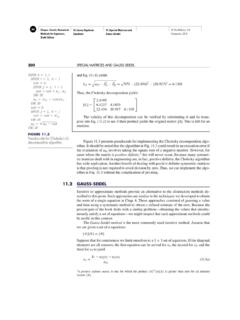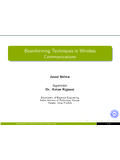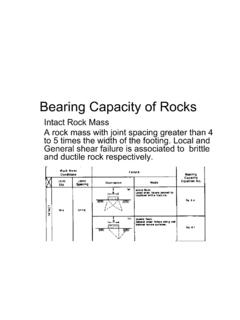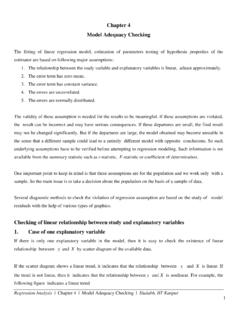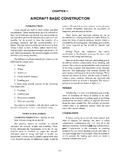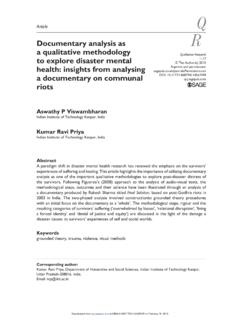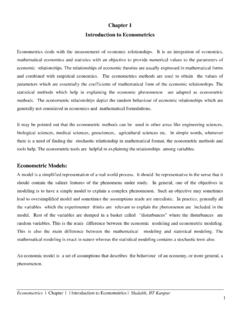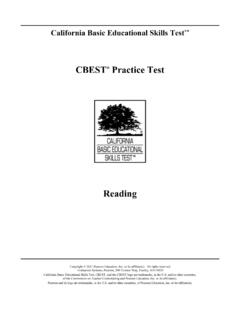Transcription of THE FORMS OF CAPITAL - IIT Kanpur
1 CHAPTER 1 THE FORMS OF CAPITALP ierre BourdieuRichardson, J., Handbook of Theory and Research for the Sociology of Education (1986),Westport, CT: Greenwood, pp. 241 58 The social world is accumulated history, and if it is not to be reduced to a discon-tinuous series of instantaneous mechanical equilibria between agents who are treatedas interchangeable particles, one must reintroduce into it the notion of CAPITAL andwith it, accumulation and all its effects. CAPITAL is accumulated labor (in its materi-alized form or its incorporated, embodied form) which, when appropriated on aprivate, , exclusive, basis by agents or groups of agents, enables them to appro-priate social energy in the form of reified or living labor. It is a vis insita, a forceinscribed in objective or subjective structures, but it is also a lex insita, the principleunderlying the immanent regularities of the social world.
2 It is what makes the gamesof society not least, the economic game something other than simple games ofchance offering at every moment the possibility of a miracle . Roulette, which holdsout the opportunity of winning a lot of money in a short space of time, and there-fore of changing one s social status quasi-instantaneously, and in which the winningof the previous spin of the wheel can be staked and lost at every new spin, gives afairly accurate image of this imaginary universe of perfect competition or perfectequality of opportunity, a world without inertia, without accumulation, withoutheredity or acquired properties, in which every moment is perfectly independent ofthe previous one, every soldier has a marshal s baton in his knapsack, and everyprize can be attained, instantaneously, by everyone, so that at each moment anyonecan become anything.
3 CAPITAL , which, in its objectified or embodied FORMS , takes timeto accumulate and which, as a potential capacity to produce profits and to repro-duce itself in identical or expanded form, contains a tendency to persist in its being,is a force inscribed in the objectivity of things so that everything is not equallypossible or the structure of the distribution of the different typesand subtypes of CAPITAL at a given moment in time represents the immanent struc-ture of the social world, , the set of constraints, inscribed in the very reality ofthat world, which govern its functioning in a durable way, determining the chancesof success for is in fact impossible to account for the structure and functioning of the socialworld unless one reintroduces CAPITAL in all its FORMS and not solely in the one formrecognized by economic theory.
4 Economic theory has allowed to be foisted upon ita definition of the economy of practices which is the historical invention of capitalism;11112345611178910123111456789 2011112345678930111123456789401111234454 64748495051111 Originally published as Okonomisches Kapital, kulturelles Kapital, soziales Kapital, in SozialeUngleichheiten (Soziale Welt, Sonderheft 2), edited by Reinhard Kreckel. Goettingen: OttoSchartz & Co., 1983, pp. 183 98. [..] Translated by Richard by reducing the universe of exchanges to mercantile exchange, which is objec-tively and subjectively oriented toward the maximization of profit, , (economically)self-interested, it has implicitly defined the other FORMS of exchange as noneconomic,and therefore disinterested. In particular, it defines as disinterested those FORMS ofexchange which ensure the transubstantiation whereby the most material types of CAPITAL those which are economic in the restricted sense can present them-selves in the immaterial form of cultural CAPITAL or social CAPITAL and vice , in the restricted sense it is given in economic theory, cannot be producedwithout producing its negative counterpart, disinterestedness.
5 The class of practiceswhose explicit purpose is to maximize monetary profit cannot be defined as suchwithout producing the purposeless finality of cultural or artistic practices and theirproducts; the world of bourgeois man, with his double-entry accounting, cannot beinvented without producing the pure, perfect universe of the artist and the intellec-tual and the gratuitous activities of art-for-art s sake and pure theory. In other words,the constitution of a science of mercantile relationships which, inasmuch as it takes for granted the very foundations of the order it claims to analyze privateproperty, profit, wage labor, etc. is not even a science of the field of economicproduction, has prevented the constitution of a general science of the economy ofpractices, which would treat mercantile exchange as a particular case of exchangein all its is remarkable that the practices and assets thus salvaged from the icy waterof egotistical calculation (and from science) are the virtual monopoly of the domi-nant class as if economism had been able to reduce everything to economics onlybecause the reduction on which that discipline is based protects from sacrilegiousreduction everything which needs to be protected.
6 If economics deals only with prac-tices that have narrowly economic interest as their principle and only with goodsthat are directly and immediately convertible into money (which makes them quan-tifiable), then the universe of bourgeois production and exchange becomes an exceptionand can see itself and present itself as a realm of disinterestedness. As everyoneknows, priceless things have their price, and the extreme difficulty of convertingcertain practices and certain objects into money is only due to the fact that thisconversion is refused in the very intention that produces them, which is nothing otherthan the denial (Verneinung) of the economy. A general science of the economy ofpractices, capable of reappropriating the totality of the practices which, althoughobjectively economic, are not and cannot be socially recognized as economic, andwhich can be performed only at the cost of a whole labor of dissimulation or, moreprecisely, euphemization, must endeavor to grasp CAPITAL and profit in all their formsand to establish the laws whereby the different types of CAPITAL (or power, whichamounts to the same thing) change into one on the field in which it functions, and at the cost of the more or lessexpensive transformations which are the precondition for its efficacy in the field inquestion, CAPITAL can present itself in three fundamental guises.
7 As economic CAPITAL ,which is immediately and directly convertible into money and may be institutional-ized in the form of property rights; as cultural CAPITAL , which is convertible, in certainconditions, into economic CAPITAL and may be institutionalized in the form ofeducational qualifications; and as social CAPITAL , made up of social obligations( connections ), which is convertible, in certain conditions, into economic capitaland may be institutionalized in the form of a title of Pierre BourdieuCultural capitalCultural CAPITAL can exist in three FORMS : in the embodied state, , in the form oflong-lasting dispositions of the mind and body; in the objectified state, in the formof cultural goods (pictures, books, dictionaries, instruments, machines, etc.)
8 , whichare the trace or realization of theories or critiques of these theories, problematics,etc.; and in the institutionalized state, a form of objectification which must be setapart because, as will be seen in the case of educational qualifications, it confersentirely original properties on the cultural CAPITAL which it is presumed to reader should not be misled by the somewhat peremptory air which the effortat axiomization may give to my notion of cultural CAPITAL initiallypresented itself to me, in the course of research, as a theoretical hypothesis whichmade it possible to explain the unequal scholastic achievement of children originatingfrom the different social classes by relating academic success, , the specific profitswhich children from the different classes and class fractions can obtain in the academicmarket.
9 To the distribution of cultural CAPITAL between the classes and class starting point implies a break with the presuppositions inherent both in thecommonsense view, which sees academic success or failure as an effect of naturalaptitudes, and in human CAPITAL theories. Economists might seem to deserve creditfor explicitly raising the question of the relationship between the rates of profit oneducational investment and on economic investment (and its evolution). But theirmeasurement of the yield from scholastic investment takes account only of monetaryinvestments and profits, or those directly convertible into money, such as the costsof schooling and the cash equivalent of time devoted to study; they are unable toexplain the different proportions of their resources which different agents or differentsocial classes allocate to economic investment and cultural investment because theyfail to take systematic account of the structure of the differential chances of profitwhich the various markets offer these agents or classes as a function of the volumeand the composition of their assets (see esp.)
10 Becker 1964b). Furthermore, becausethey neglect to relate scholastic investment strategies to the whole set of educationalstrategies and to the system of reproduction strategies, they inevitably, by a neces-sary paradox, let slip the best hidden and socially most determinant educationalinvestment, namely, the domestic transmission of cultural CAPITAL . Their studies ofthe relationship between academic ability and academic investment show that theyare unaware that ability or talent is itself the product of an investment of time andcultural CAPITAL (Becker 1964a, pp. 63 66). Not surprisingly, when endeavoring toevaluate the profits of scholastic investment, they can only consider the profitabilityof educational expenditure for society as a whole, the social rate of return, or the social gain of education as measured by its effects on national productivity (Becker1964b, pp.

